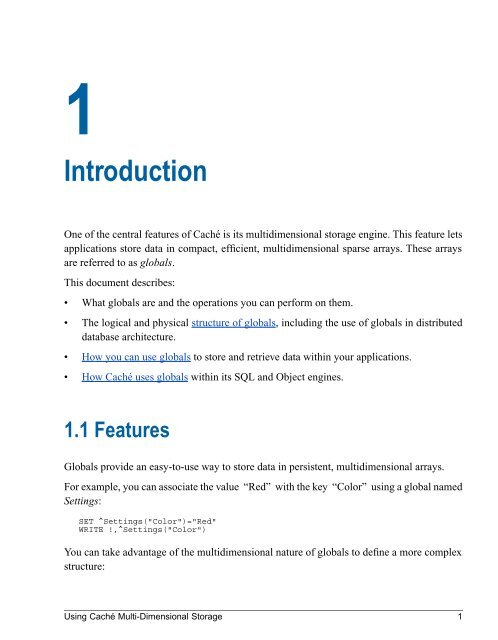Using Caché Multi-Dimensional Storage - InterSystems ...
Using Caché Multi-Dimensional Storage - InterSystems ...
Using Caché Multi-Dimensional Storage - InterSystems ...
You also want an ePaper? Increase the reach of your titles
YUMPU automatically turns print PDFs into web optimized ePapers that Google loves.
1<br />
Introduction<br />
One of the central features of <strong>Caché</strong> is its multidimensional storage engine. This feature lets<br />
applications store data in compact, efficient, multidimensional sparse arrays. These arrays<br />
are referred to as globals.<br />
This document describes:<br />
• What globals are and the operations you can perform on them.<br />
• The logical and physical structure of globals, including the use of globals in distributed<br />
database architecture.<br />
• How you can use globals to store and retrieve data within your applications.<br />
• How <strong>Caché</strong> uses globals within its SQL and Object engines.<br />
1.1 Features<br />
Globals provide an easy-to-use way to store data in persistent, multidimensional arrays.<br />
For example, you can associate the value “Red” with the key “Color” using a global named<br />
Settings:<br />
SET ^Settings("Color")="Red"<br />
WRITE !,^Settings("Color")<br />
You can take advantage of the multidimensional nature of globals to define a more complex<br />
structure:<br />
<strong>Using</strong> <strong>Caché</strong> <strong>Multi</strong>-<strong>Dimensional</strong> <strong>Storage</strong> 1

















